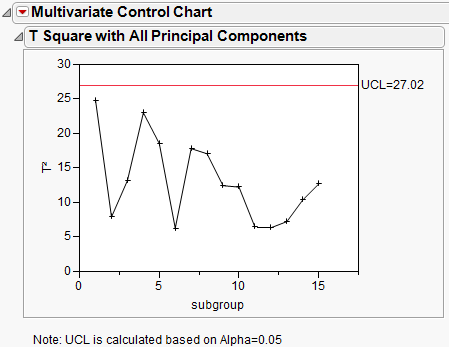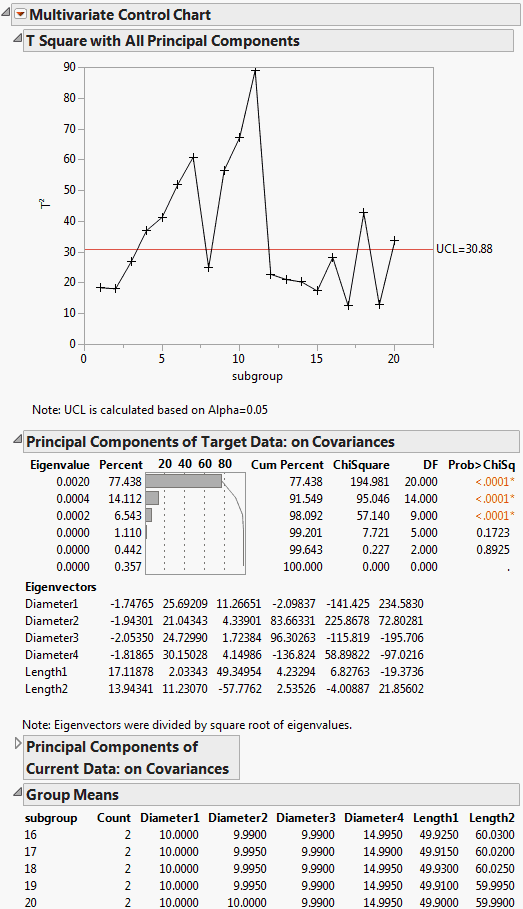Example of Monitoring a Process Using Sub-Grouped Data
The workflow for monitoring a multivariate process with sub-grouped data is similar to the one for individual data. See Example of a Multivariate Control Chart. You create an initial control chart to save target statistics and then use these targets to monitor the process.
Step 1: Determine Whether the Process Is Stable
1. Select Help > Sample Data Library and open Quality Control/Aluminum Pins Historical.jmp.
2. Select Analyze > Quality and Process > Control Chart > Multivariate Control Chart.
3. Select all of the Diameter and Length columns and click Y, Columns.
4. Select subgroup and click Subgroup.
5. Click OK.
Figure 10.7 Multivariate Control Chart for Sub-Grouped Data, Step 1
The process appears to be in statistical control, making it appropriate to create targets using this data.
Step 2: Save Target Statistics
1. Click the red triangle next to Multivariate Control Chart and select Save Target Statistics.
This creates a new data table containing target statistics for the process.
2. Save the new data table as Aluminum Pins Targets.jmp.
Now that target statistics have been established, create the multivariate control chart for process monitoring.
Step 3: Monitor the Process
1. Select Help > Sample Data Library and open Quality Control/Aluminum Pins Current.jmp.
This sample data table contains recent observations from the process.
2. Select Analyze > Quality and Process > Control Chart > Multivariate Control Chart.
3. Select all of the Diameter and Length columns and click Y, Columns.
4. Select subgroup and click Subgroup.
5. Click Get Targets.
6. Open the Aluminum Pins Targets.jmp table that you saved.
7. Click OK.
8. Click the red triangle next to Multivariate Control Chart and select Show Means.
The Show Means option gives the means for each subgroup. You can then observe which groups are most dissimilar from each other.
Figure 10.8 Multivariate Control Chart for Sub-Grouped Data, Step 3
Figure 10.8 shows indications of instability at subgroups 4-7, 9-11, 18, and 20. This result implies that these observations do not conform to the historical data from Aluminum Pins Historical.jmp, and that the process should be further investigated. To determine why the process was out of control at these points, you might want to examine individual univariate control charts or perform another univariate procedure.
An alternative method to monitoring this process is based on the big principal components. In this example, for the historical data, the first three principal components account for about 98% of the variation. Based on this, you might construct a chart for the first three principal components. Then you would monitor current data using those three components. The control limits for the chart used in monitoring the process should be based on the corresponding chart for the historical data.

